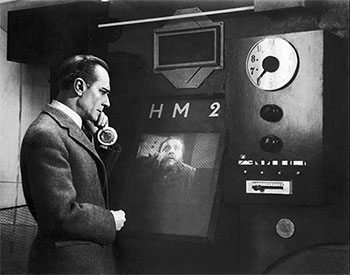 Real-time video technology has gained popularity at an impressive pace, with services like Skype and FaceTime making it easier than ever to stay in touch with friends, family and coworkers anywhere in the world. While these may be wonderful choices for consumers and even business users, let’s take a look at whether they adequately meet the needs of field service organizations where on-site problem-solvers need to connect with remote experts.
Real-time video technology has gained popularity at an impressive pace, with services like Skype and FaceTime making it easier than ever to stay in touch with friends, family and coworkers anywhere in the world. While these may be wonderful choices for consumers and even business users, let’s take a look at whether they adequately meet the needs of field service organizations where on-site problem-solvers need to connect with remote experts.
FaceTime
FaceTime is an exclusive product to the Apple ecosystem, which means there are limitations to who FaceTime users can “video in.” If a field tech was trying to FaceTime with an expert using an Android or Windows phone, or an older iPhone, they would be out of luck. No connection would be made, and they would have to revert to a traditional, lengthy phone call to describe the problem. Additionally, FaceTime allows only point-to-point viewings and does not support a matrix of viewers. If the field tech wanted to dial-in another viewer to their live-streaming video, he would be unable to.
An added bonus that video technology brings to the table in field services is the option for field techs to record video for future training references. FaceTime does not have the ability to perform this operation, which should be a consideration for organizations who want to take advantage of on-the-job recording and playback.
Finally, when it comes to connectivity, FaceTime calls have to be on Wi-Fi (iOS 4 and 5 devices) or a reliable 3G/4G cellular network connection (iOS 6 and higher). In addition, FaceTime does require a fairly robust network connection to maintain a reliable video feed, and this is not always available when working in the field.
Skype
Recent upgrades to Skype have made it more effective in business environments. For instance, Skype now provides the ability to support up to 10 participants in a video conference call and, unlike FaceTime, supports a broad range of mobile devices as well as PCs. There is, however, still a gap between applications designed for the office and solutions designed for the field.
Many of the same shortcomings of FaceTime in field service-type environments are shared with Skype. For instance, there is no native recording features and, while Skype was designed for use in areas with robust Wi-Fi or wired connections, it’s unfair to expect flawless performance in situations where connectivity is not so good.
Additionally, organizations need to give consideration to the security of their video solution to make sure IP and confidential footage doesn’t end up getting into the wrong hands. Recently, the Electronic Frontier Foundation released a new scorecard comparing a variety of video chat apps grading them on the level of security offered and Skype received a less than stellar review. This level of security may be fine when chatting with a friend, but not when sharing enterprise footage.
The Need for an Enterprise-Grade Video Solution
FaceTime and Skype have proven to be excellent options for consumers and business users who want to take advantage of live-streaming video technology, but do not adequately meet the demands of field service organizations where on-site field techs need to communicate with remote experts or headquarters.
Neither allows signals from multiple cameras to be delivered to multiple viewing devices in a controlled fashion nor do they allow the real time video to be archived in a secure location for forensic review at a later date. Finally, neither has the intelligence to cope with variations in network conditions that degrade a mobile signal – conditions as common as a car driving by, a building between the camera and the cell tower or other individuals using the network.
As an alternative, field service organizations should look for an enterprise-grade video solution that provides everything needed to speed and improve remote problem solving and collaboration, including:
- Dependability – Ability to adapt the signal to ensure that it will get through, even when network conditions are not optimal.
- Multiple Viewing Options – Video streams that can be securely viewed from any internet-enabled device, ranging from desktop to laptop to iOS and Android tablets and smart phones.
- Flexible, centralized administration – Features allowing administrators to centrally manage camera usage policies and password protected viewer access to ensure security.
- Archiving – Ability for video to be archived, with administrators having the option to download any or all of their video at any time for their own records or future training.